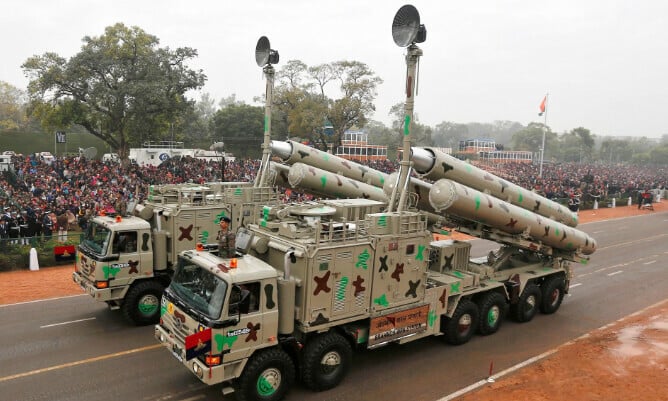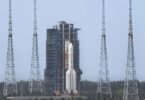India’s top governmental body, the Defence Acquisition Council (DAC) has recently approved purchases of a bulk of the latest weaponry including long-range missiles, modern helicopters, heavy artillery guns, and the latest electronic warfare systems worth $8.5 billion, to overcome the so-called shortage of military weapons that never filled in past decades. The shopping list includes 200 additional BrahMos missiles, 50 utility helicopters, and electronic warfare systems for the Navy, a long-range stand-off weapon for IAF, SU-30 MKI fleet, along with 307 units of 155mm/52 caliber towed artillery guns, high mobility vehicles and other sophisticated equipment for Indian Army. According to the Ministry of Defence of India, all orders would be placed with Indian companies to give a push to boost domestic defense manufacturing under Narendra Modi’s Make in India narrative.
Over the years, India has pursued a Bizarre Arms Procurement Policy through which Indian state agents made business with global defense construction giants and multiple defense forces in Europe and North America. Once the longstanding and largest defense importer of the former Soviet Union is now a blue-eyed and close ally of the United States and its close partners and allies. According to Sweden-based Stockholm International Peace Research Institute (SIPRI), India had been the largest arms importer between 1992-2022 and accounted for 11% of global arms imports despite the fact the Modi regime was pursuing Make in India manifesto over the past several years. Realistically, Indian warmongers had turned Gandhi’s legacy of pacifism into the doctrine of jingoism over the past decades through reckless arms production, collection, and preaching of fascism and hate at home and abroad.
Apparently, India’s hegemonism has exceeded its limits beyond South Asia as Modi led BJP Regime in New Delhi seeks to expand its political and military influence in the broader Indo-Pacific region, from the Bay of Bengal to the entire Indian Ocean and the Arabian Sea along with engaging Afghanistan and Central Asia across Pakistan. New Delhi is tactfully using the Security Dilemma theory and self-presumed two-way nuclear threat from China and Pakistan while exaggerating the mere border standoff with China and the all-seasons simmering tension in Indian-Occupied Jammu and Kashmir. Interestingly, Indian leaders had gathered the latest weaponry from across the world on false pretexts throughout history. The fact is that every state in the region including Pakistan, Bangla Dash, Sri Lanka, Nepal, and Maldives remained a victim of Indian belligerence and faced military coercion from New Delhi in the past.
Realistically, the South Asia region presents a unique and dangerous geostrategic matrix, because three nuclear weapons state China, Pakistan, and India lay side by side and maintain a hostile purview vis-a-vis India and China as well as India and Pakistan. Surprisingly, a 1.5 billion strong nation and second-largest military power in the world equally feel a threat by its superior neighbor in the North and many times lesser Pakistan in the west, at the same time it is head to head with its all neighbors in one or other way. India’s campaign for military transformation and large-scale weapon production and collection, intended to apparently deter Chinese threats caused serious existential threats for Pakistan and other weaker nations in the neighborhood. The worst-case scenario is that South Asia is entering a new accelerated arms race due to irresponsible and politically motivated massive investment in the defense sector, procurement, and manufacturing of lethal arms and ammunition by India that will surely falsify the concept of deterrence and disturbs the military balance in a regional perspective. Moreover, the decades-long Kashmir dispute and unlawful actions of the Modi regime further push two competing nuclear neighbors toward an armed and potential nuclear conflict at any time in the future. Therefore, the global community must understand peculiar geopolitical and strategic configurations in South Asia and must play a constructive role in resisting India’s unending militarism and persistent hegemonism so the geostrategic balance and peaceful co-existence be ensured in the highly volatile region in the world.







